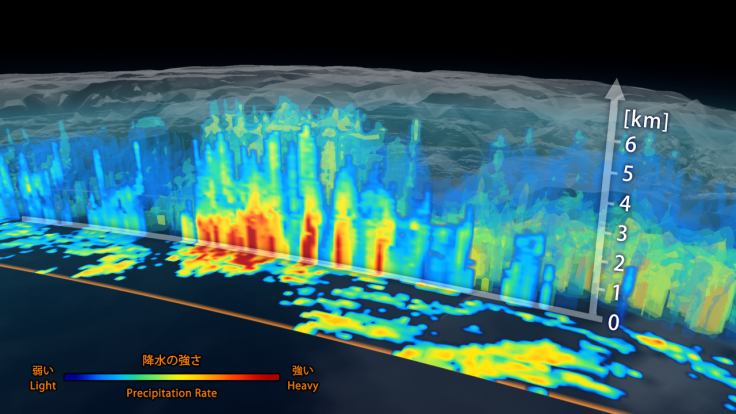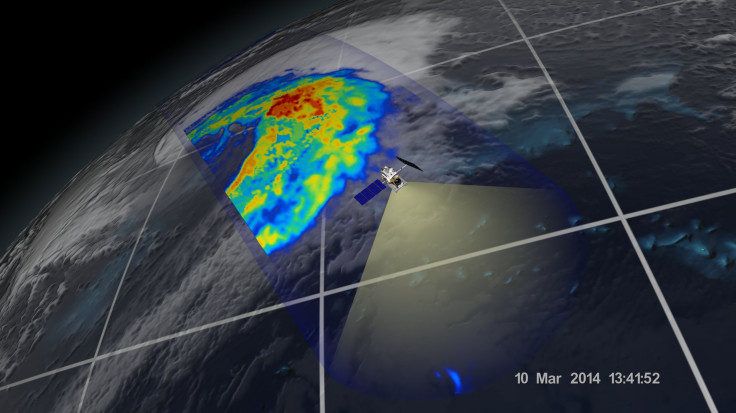NASA Reveals 3D Look Inside A Cyclone From Recently Launched Global Precipitation Satellite [PHOTO]
Spectacular images are in from the new Global Precipitation Measurement Core Observatory satellite, a joint project of NASA and the Japan Aerospace Exploration Agency (JAXA), which observed a cyclone off the coast of Japan on March 10. The first images from the global precipitation satellite reveal the size and scope of the cyclone as a 3D cross-section.
The cyclone, a storm system that develops when warm and cold air collide, was a perfect first target for the satellite. According to NASA, a cyclone can produce several types of precipitation, from rain to snow to ice, as well as high winds.
The GPM Core Observatory satellite was launched on Feb. 27, and its main mission is to track and measure rain and snow around the world. These measurements can be updated every three hours following the launch of additional satellites.

For its first test, the GPM satellite observed a cyclone off the coast of Japan using the Dual-frequency Precipitation Radar and the GPM Microwave Imager. The instruments serve different functions while also measuring the amount of precipitation in a given area. The GMI covers a larger area and measures Earth-generated energy as well as precipitation, while the DPR can be used to create detailed 3D snapshots of an area. The different channels used by the GMI, and the two used by the DPR, can be used to identify different types of precipitation, even down to the size of the raindrops and snowflakes. The two instruments, together, can basically "see through" clouds and storm systems.

Gail Skofronick-Jackson, GPM project scientist at NASA's Goddard Spaceflight Center, said in a statement, "I knew we had entered a new era in measuring precipitation from space. We now can measure global precipitation of all types, from light drizzle to heavy downpours to falling snow." For researchers, the GPM satellite provides researchers with new insights into the structure of a storm system, what is actually happening within a cloud and how much water is actually reaching the Earth's surface. Skofronick-Jackson said the GPM data may yield new insights into floods and droughts.
A video detailing the GPM Core Observatory satellite's observation of the cyclone, courtesy of NASA, can be viewed below.
© Copyright IBTimes 2024. All rights reserved.






















